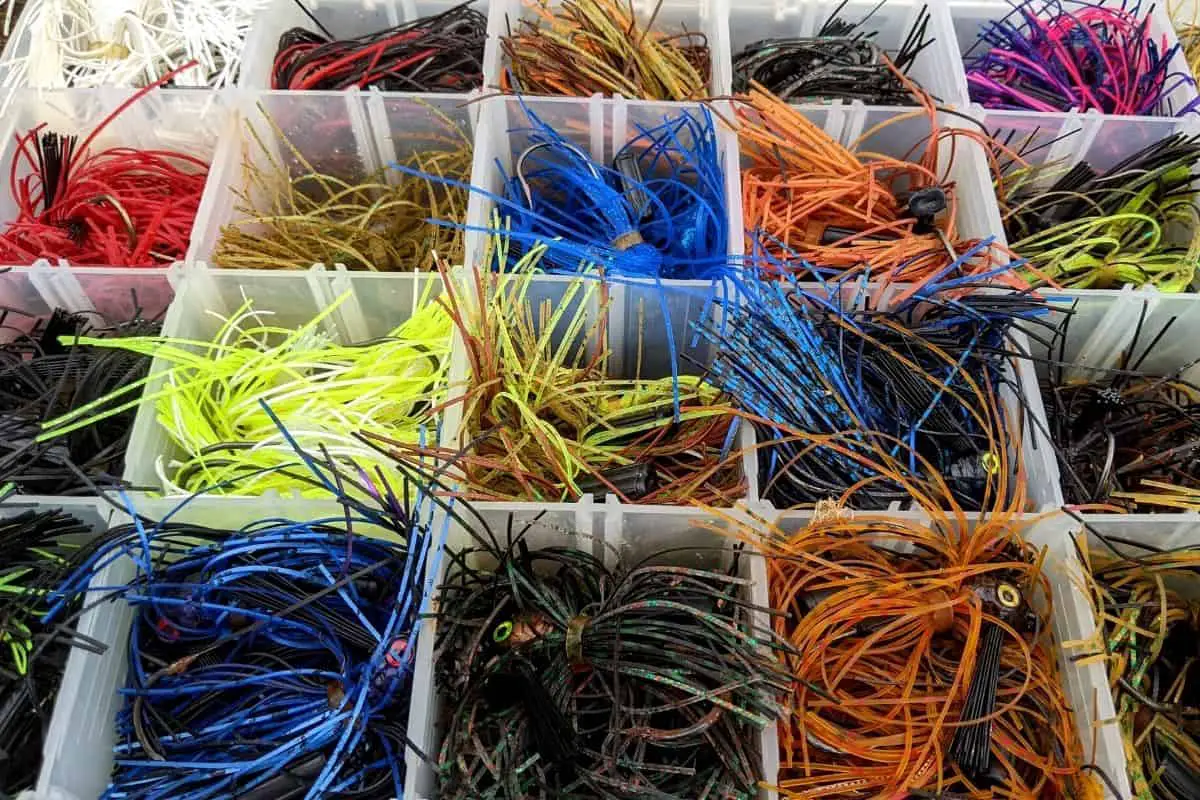A bass jig works all year, in any conditions, on any water. It is one of the most versatile lures a bass angler can use.
Four jigs colors will work any place you fish. Black-blue, brown, green pumpkin or watermelon, and white. These colors will match most prey species anglers may find in the waters they fish.
This is a terrific starting point. More precise color selection can be taken into consideration as your selection of jigs expands over the years.
Why These Four Colors Will Work Anywhere
Scientists have shown that bass can see high-contrast colors well. Black-blue fits into that category.
Many anglers will use a black-blue jig when the water is stained or dirty. Solid patterns stand out in low visibility conditions. Whether that is because the water has color to it or because of low-light, lures that create a solid profile are easier for bass to pick out.
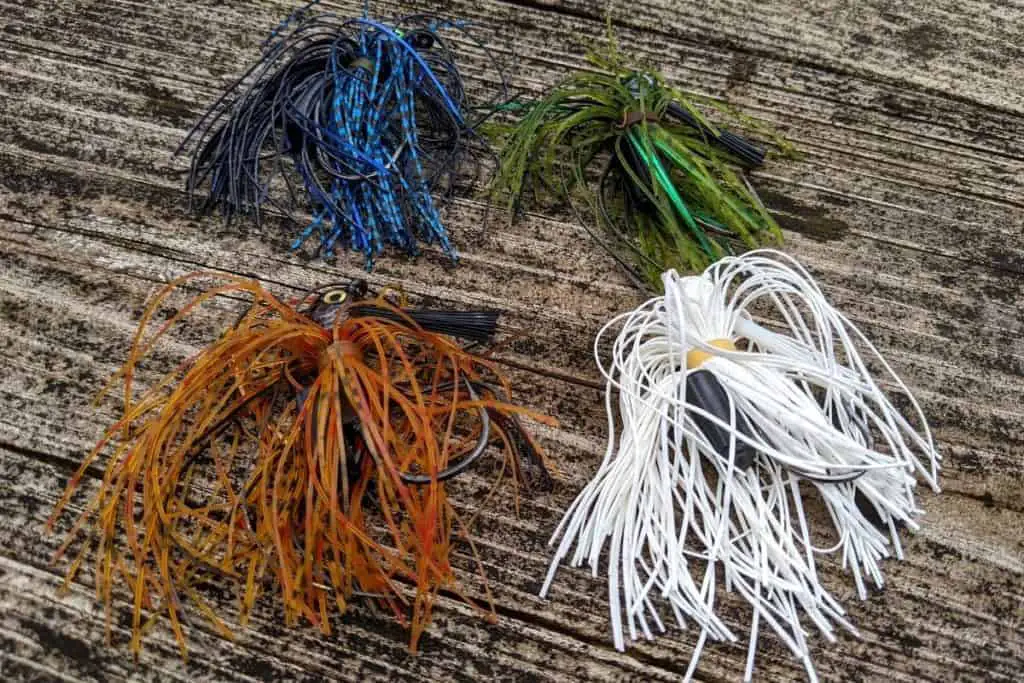
Brown and green pumpkin match a wide range of prey species. These colors not only mimic crawfish in a couple of different patterns, but the green pumpkin also matches a basic panfish coloration.
White is perfect to imitate baitfish like shad and minnows. In underwater tests I have performed, white also stands out in dirty water better than blacks and black-blues. The below image will show you what I have found.
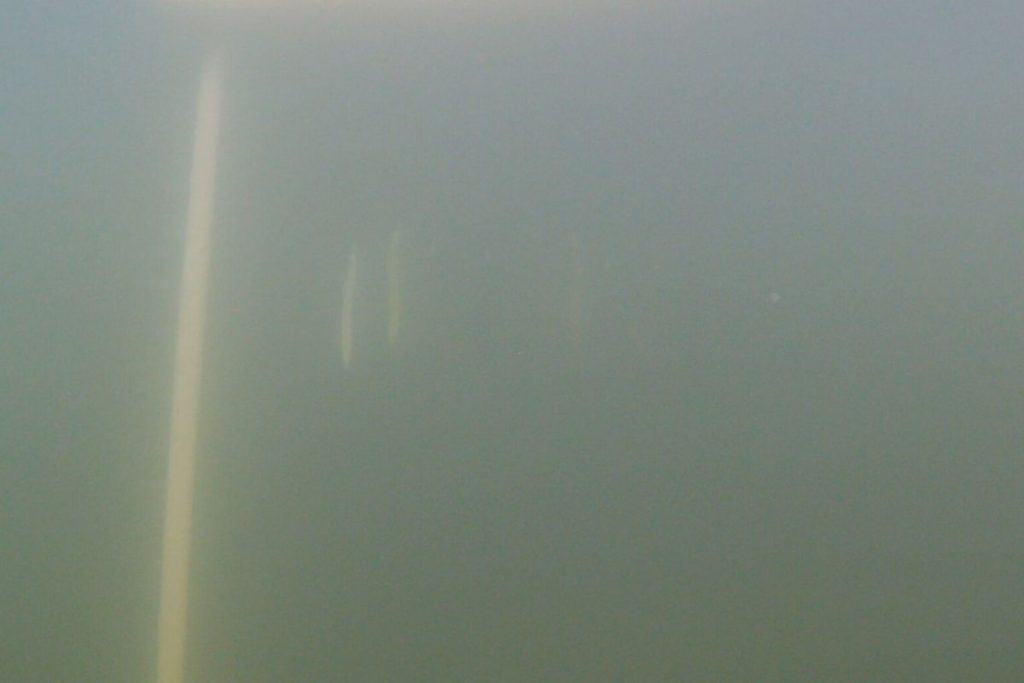
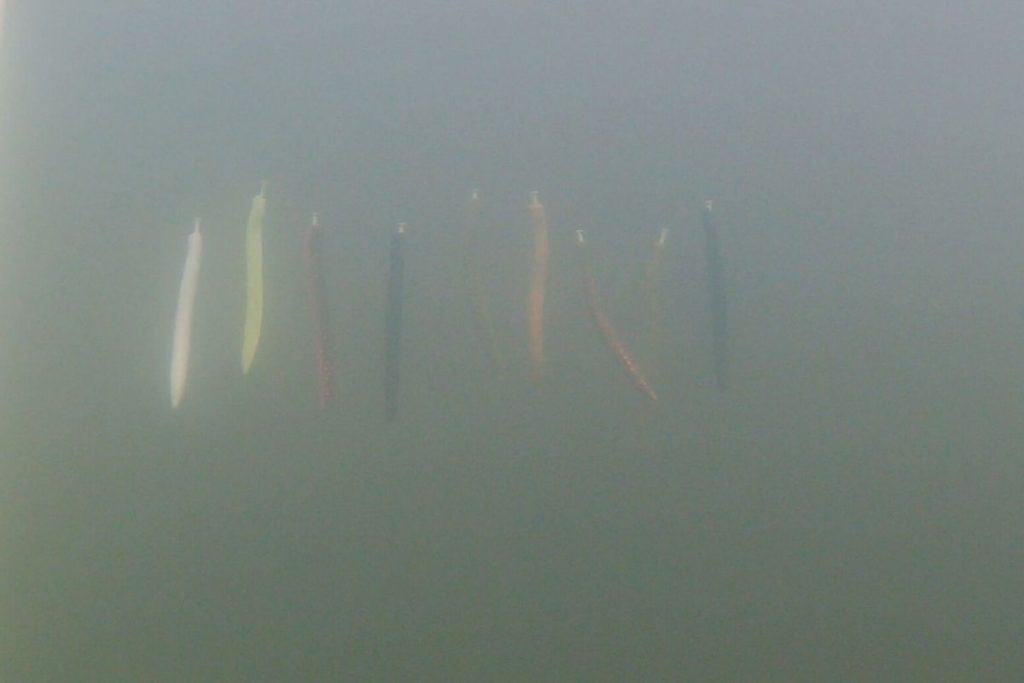
(Here is an article that goes into more detail on color selection for dirty water.)
The Clearer the Water the More Detailed Jig Colors Can Be
In clear water, I prefer to use jigs that have more detail. This can be accomplished by using skirts that have strands of multiple colors or silicone with reflective and translucent surfaces.
When prey species are examined closely, it is amazing how varied and colorful they are. Even a baitfish as basic as a minnow sport a range of hues.
As mentioned earlier, I try to match these patterns when fishing clear water.
In this type of environment, predators like bass become sight-oriented. When the bass move in and get a closer look at the lure it needs to resemble what they are eating.
When the bass are hyper-aggressive, it doesn’t matter. But most of the time, these favorite gamefish are not in an active feeding mood. Therefore when we pique their curiosity, we need to not give them a reason to turn away.
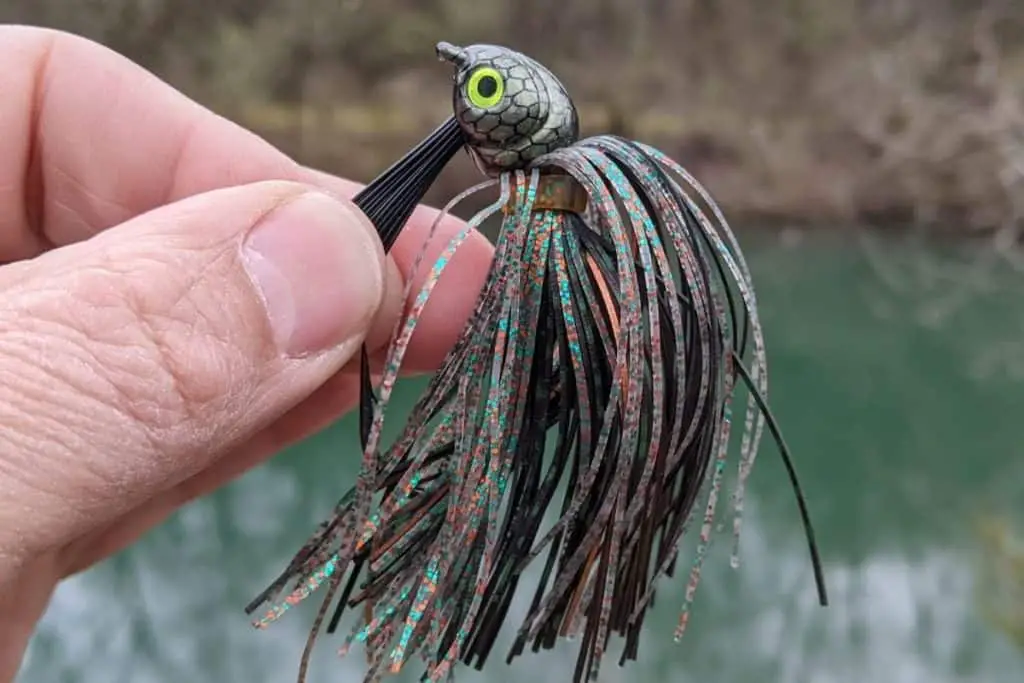
Understanding the Color Pattern Of the Crawfish When Jig Fishing
These little crustaceans that bass find so delicious go through several color sequences throughout the year.
The microorganisms they eat, as well as the places they hide, influence what color phase they will be in. Most crawfish will be a mixture of greens and browns. When these creatures molt, then they will take on a bright red or orange complexion.
At any time, crawfish populations can be in several different color phases. There is even a blue crawfish that is endemic to Florida, but I have found them in local ponds here in northern Illinois. And yes, they are extremely blue.
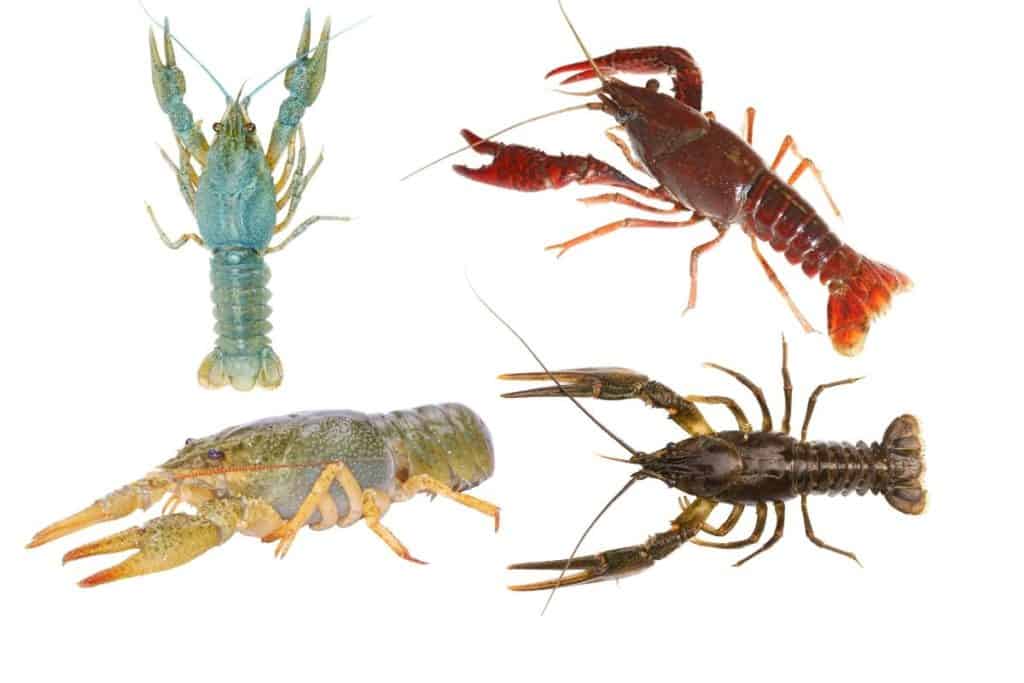
In lakes with silty bottoms, I have seen thousands of crawfish that are milky-white.
Flipping a few rocks around the shoreline will quickly tell anglers what is the predominant color pattern at the given time. When fishing waters that have good visibility, this is an important step to ensure that the bass find the jig you are using to be natural and something they are used to eating.
Understanding the Color Pattern of Baitfish When Jig Fishing
As with crawdads, having a good idea of what the baitfish in the water look like will help you choose jig colors.
Like we talked about earlier, this isn’t as critical when fishing water with color or stain to it, but when fishing clear water it becomes important.
Panfish often take on vibrant patterns on sunny days in water with good visibility. It is surprising how many colors and how bright they are. I have learned a lot about this when filming underwater. Some days it feels like I am filming a coral reef, yet it is just a strip mine pit in the midwest.
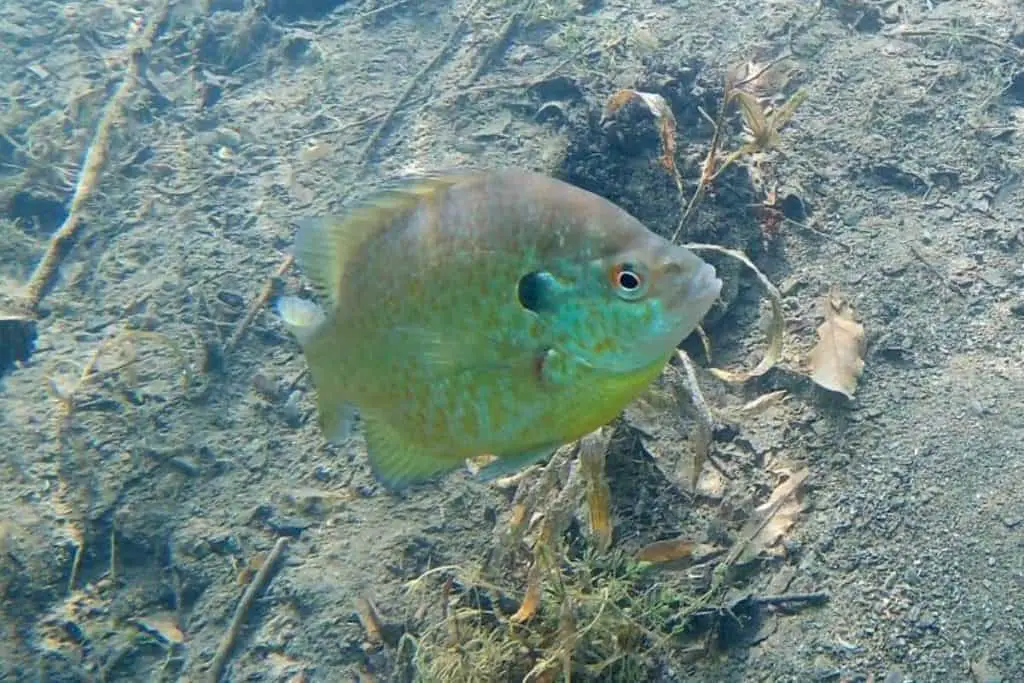
Even shad and minnows show a variety of colorations. Many baitfish even have a translucent quality to them – especially on sunny days.
Using jigs that have skirt strands matching these various color patterns is important when the bite is not as aggressive as we would like.
Keep in mind that prey species have brighter and more vibrant colors and hues when they are in the water. When we pull them out, most of the time their overall pattern becomes a bit duller or muted.
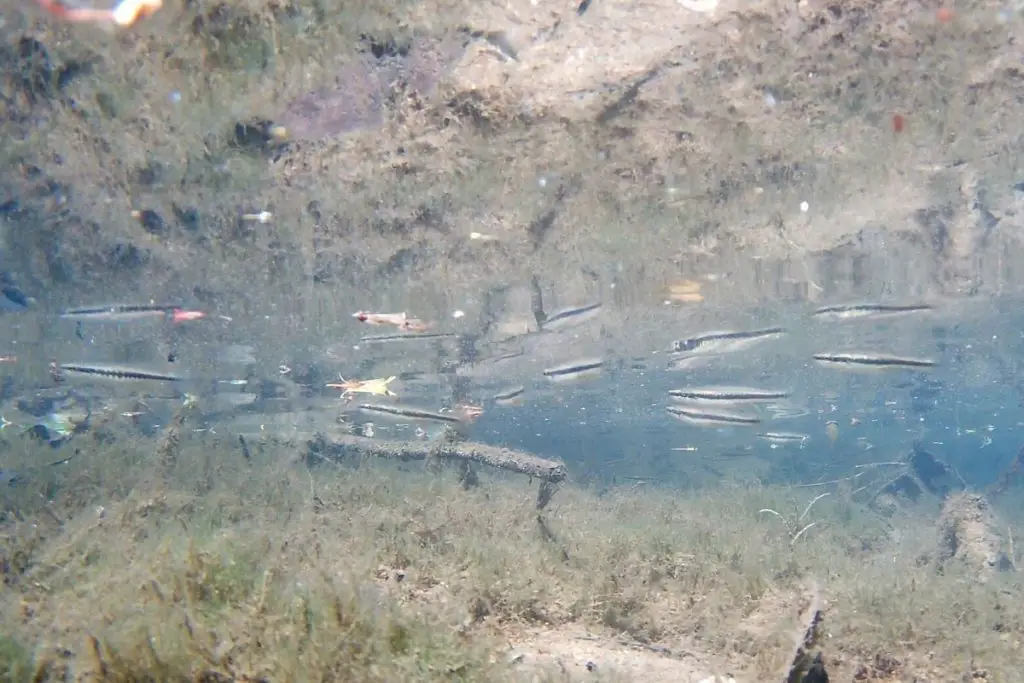
Soft Plastic Color Trailer Choice for Jigs
The plastic jig trailer is often thought of as an extension of the jig itself.
Jig trailers add extra action to the lure, provide more bulk or profile, and also impact the fall rate.
(Here is an article on what anglers put on their jigs.)
When imitating baitfish with my jigs, using plastic trailers that enhance the color of the lure and provide swimming action is key. I love to use twin-tail grubs as a plastic trailer. These soft plastics can be positioned either horizontally or vertically.
Twin-tail grubs also imitate crawfish, but I often switch over to soft plastics that look more like a crawfish.
(Here is an article about trimming the skirts on jigs.)
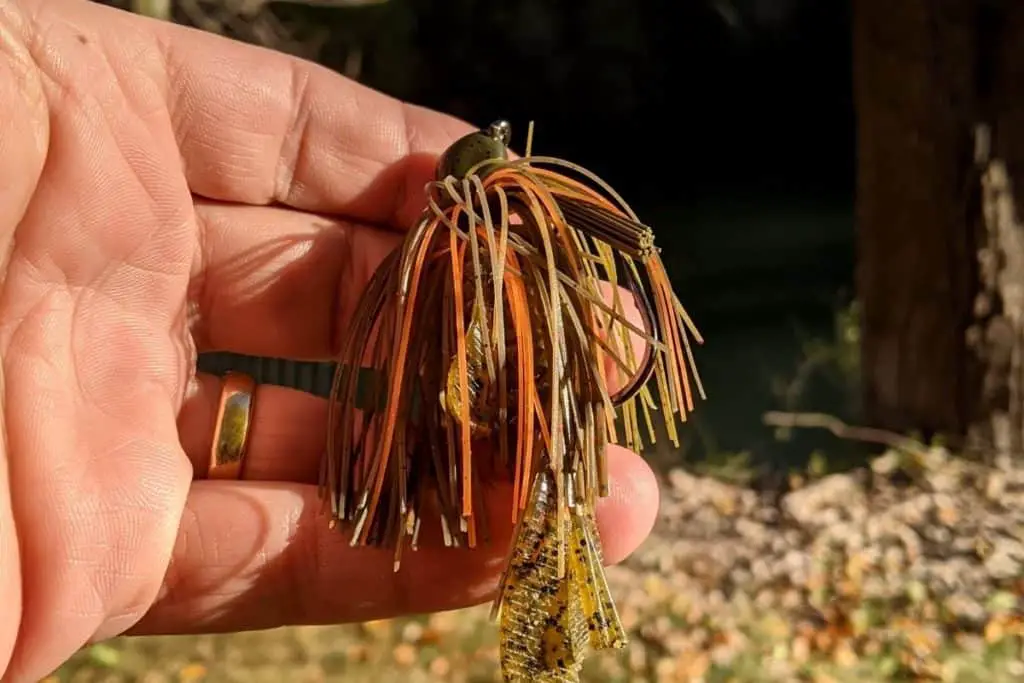
How to Tell if the Color You Chose is the Right One for Your Jig
This is something bass anglers always think about. Is this color working? Is there another color that would be better?
First, it is important to know that presentation and cadence also play an important role in the number of bites we get, but here is a simple process I use to determine how successful my color choice is.
How are the bass eating the lure?
Do they inhale it? Or are they just nipping at it? Or even worse, do they follow it and then turn away?
Our goal as anglers is to create a situation where the bass inhale the lure.
If the bass are reluctant, then I will not only alter my retrieve and cadence, but I will also start to adjust the colors of my jigs.
This seems to be more important when fishing on the bottom, or directly imitating crawfish. It is easy to choose a jig that is not matching what the color pattern of the crustaceans is on that particular day.
Add some brown, try a little more green or a skirt that has both in it. Even something as simple as dying the tips of the plastic trailer and adding a little orange can make a noticeable difference.
Keep Adjusting and Learning About Jig Color
Like we talked about at the beginning of the article, black-blue, green pumpkin, brown and white will work any place you fish.
The fun, and challenge, of making small adjustments to jig color is to dial in the bite on any given day.
When bass are in the midst of an aggressive feeding frenzy, lure color is less important. So often though, as anglers, we must work for a bite. This is when jig color can make a difference.
Good luck and be sure to encourage someone today. You never know how you may change their life forever.
Isaiah 6:8

